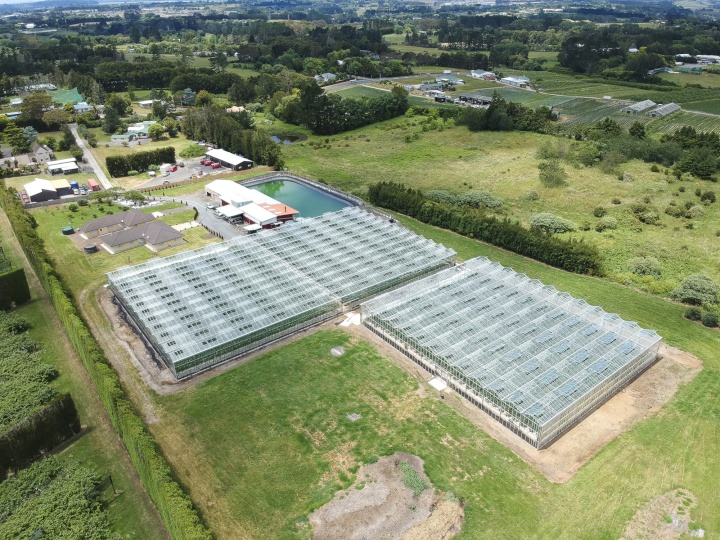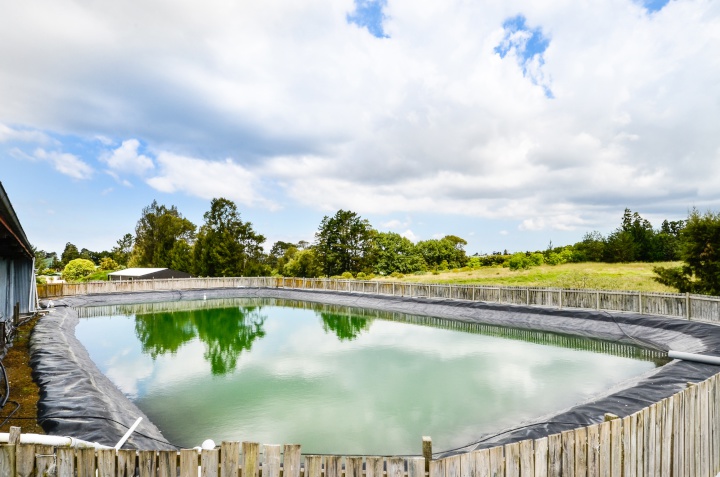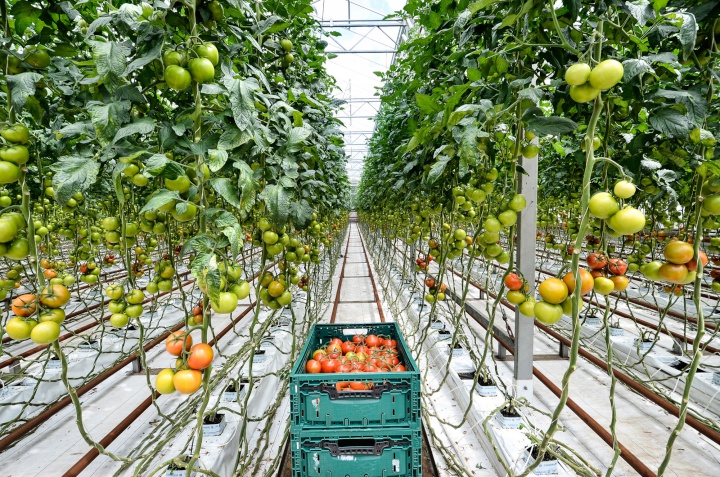Tomato hothouse business up for sale is ripe for the picking
A large-scale hothouse tomato production business with the potential to expand its output further has been placed on the market for sale.

The 6,000 square metre hothouse operation – complete with its own reservoir and eco’ efficient heating system – is located at Riverhead on Auckland’s northern metropolitan urban belt in a region which sustains small sheep and beef operations, a small percentage of dairy farms, and a growing number of lifestyle block residential landholdings.
A comprehensive catalogue of horticultural infrastructure and plant linked to the property are also featured in the package, including:
• Two existing hothouse complexes
• A galvanized iron machinery and plant storage shed
• A commercial-sized reservoir supported by an industrial-grade water pumping and hydration plant
• A waste oil-fueled boiler heating plant, with substantial oil storage tanks
and
• Two residential dwellings used as the owner’s abode, and for potential staff quarters
The 2.72 hectare freehold productive property, substantial glasshouse buildings, along with associated plant and operational machinery at 1292 Coatesville-Riverhead Highway, are being marketed for sale by negotiation through Bayleys North-West.
Salesperson Allan Maclean said the well-established hothouse operation had been developed over some 14 years, and was being offered for sale in a ‘turn-key’ state - with tomatoes on the vine and ready to harvest and a long-standing wholesale supply contract in place.
“This high-stud glass hothouse production method with its automated hydroponic feeding and watering system, combined with an industrial energy-efficient heating plant, and irrigation from a consented purpose-built commercial reservoir, enables truss-grade crops to be grown for almost 11 months of the year,” Mr Maclean said.

“Irrigation for the tomato-growing process comes from a specifically-formed reservoir on site, which is fed by reticulated water run-off collected from the hothouse rooves.”
Under its current format, the tomato growing, harvesting and packing operation is staffed by four full-time employees. Picked tomatoes are packed within the hothouse via a moveable platform system, and are sold to an Auckland wholesaler. Product is delivered three times a week.
The business generated $790,000 of wholesale tomato sales in the 2017/2018 financial year from 22,000 trays of crop – with 98 percent of the crop sold as premium-grade truss tomatoes, with the remainder sold as loose tomatoes.
Mr Maclean said there was considerable potential to expand the site’s hothousing capacity by at least a further 2000 square metres– with a rear quadrant of the property currently undeveloped flat bare land, and additional underutilised flat land situated between the existing hothouses and the boundary hedgerow.
“Depending on any new owners’ strategy for the business, these currently vacant spaces could be brought on line either straight away, or as part of a longer growth plan,” he said.

“Additional commercial hothouse structures could either be used to grow tomatoes, or to sustain such new crops as spinach, cucumber, capsicum, coriander, chilies or berry fruit to add diversity to the site’s business model.
“In addition to the reservoir water supply, the property can also draw water from a consented bore which would sustain any expansion of hothouse activities on the site.”
Mr Maclean said that one of the large sheds on the property could also be converted relatively easily to sustain other vegetable cropping activities which were sustainable with minimal light exposure. Varieties could include mushrooms, rhubarb, beansprouts, chicory or asparagus.
“With existing heating and irrigation infrastructure in place, crop diversification would be relatively simple to instigate for most professional horticultural operators,” he said.
The two residential dwellings on the property consist of a five-bedroom single-story brick and tile dwelling, and a similar style four-bedroom residence. Both low maintenance properties are less than 11-years-old. The land is zoned rural.


 Master Plumbers Gasfitters and Drainlayers NZ: 2025 New Zealand Plumbing Conference Awards: Full List Of Winners
Master Plumbers Gasfitters and Drainlayers NZ: 2025 New Zealand Plumbing Conference Awards: Full List Of Winners Insurance Council of New Zealand: Insurers Support Kiwis As Severe Weather Eases
Insurance Council of New Zealand: Insurers Support Kiwis As Severe Weather Eases Science Media Centre: What Goes Into Making Our Seasonal Flu Jab? – Expert Q+A
Science Media Centre: What Goes Into Making Our Seasonal Flu Jab? – Expert Q+A The Document Foundation: Celebrating 20 Years Of The OASIS Open Document Format (ODF) Standard
The Document Foundation: Celebrating 20 Years Of The OASIS Open Document Format (ODF) Standard Maritime Union of New Zealand: Maritime Union Raises Serious Concerns Over Aratere Ferry Removal
Maritime Union of New Zealand: Maritime Union Raises Serious Concerns Over Aratere Ferry Removal Ferry Holdings Limited: Decommissioning Of The Aratere Ferry
Ferry Holdings Limited: Decommissioning Of The Aratere Ferry